The World Health Organisation (WHO) is the latest to call for a tax on sugary drinks in a bid to curb the obesity and Type-2 diabetes crisis. From The ABC:
Governments should use tax policy to increase the price of sugary drinks like sodas, sport drinks and even 100 per cent fruit juices as a way to fight obesity, diabetes and tooth decay…
A 20 per cent price increase could reduce consumption of sweet drinks by the same proportion, the WHO said in Fiscal Policies for Diet and Prevention of Noncommunicable Diseases, a report issued on World Obesity Day.
Drinking fewer calorific sweet drinks is the best way to curb excessive weight and prevent chronic diseases such as diabetes…
“We are now in a place where we can say there is enough evidence to move on this and we encourage countries to implement effective tax on sugar-sweetened beverages to prevent obesity,” Temo Waqanivalu, of WHO’s department of Noncommunicable Diseases and Health Promotion, told a briefing.
Obesity more than doubled worldwide between 1980 and 2014, with 11 per cent of men and 15 per cent of women classified as obese — more than 500 million people, the report said…
WHO guidelines say people needed to roughly halve the amount of sugar they consume to lower risks of obesity and tooth decay.
Regular readers will know that I support such a policy prescription.
The incidence of “diabesity” (diabetes and obesity) is a growing issue in Australia and throughout the world, and a tax on sugary beverages is a good place to start.
Credit Suisse’s October 2013 report, entitled Sugar: Consumption at a crossroads, showed clearly that Australia has one of the highest sugar consumption rates in the world, clocking in at more than double the world’s average sugar consumption:
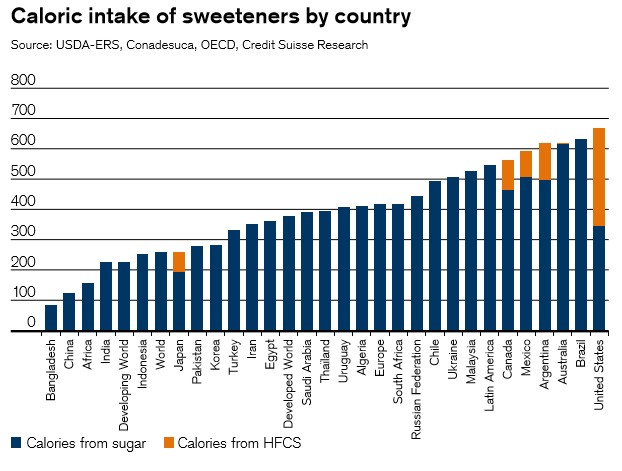
It also showed that Australia is one of the most obese nations on earth:
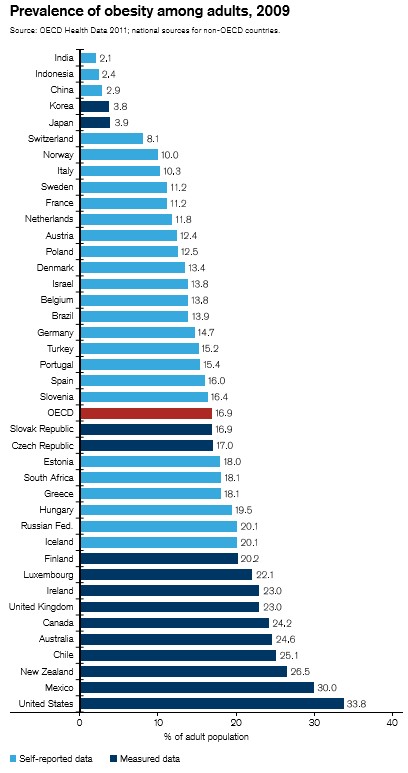
And that there is a direct link between sugar consumption and soaring health costs, with over 86% of doctors from around the world agreeing that sugar is linked to the development of obesity, type II diabetes, and non-alcoholic fatty liver:
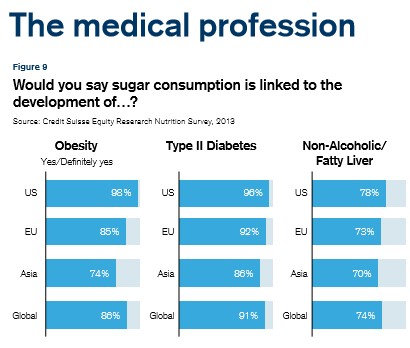
Moreover, the costs of diabetes on our health systems is particularly high:
“Diabetes type II is now affecting close to 370 million people worldwide, with one in ten US adults affected by it. The costs to the global healthcare system are a staggering USD 470 billion according to the most recent estimates from the International Diabetes Federation, and represent over 10% of all healthcare costs. In the USA alone, the healthcare costs tied to diabetes type II are estimated at USD 140 billion, compared to USD 90 billion for tobacco-related healthcare costs. even more worrisome is that these numbers are growing at a rate of 4% a year, much faster than for obesity (1%–2%). By 2020, the annual cost to the healthcare system globally will reach USD 700 billion and the people affected will be close to 500 million…”
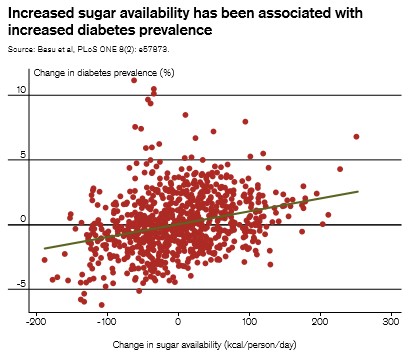
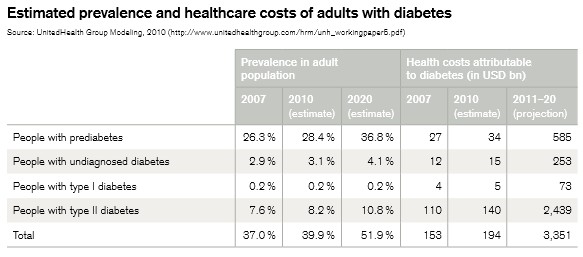
That said, there also needs to be a complete overhaul of Australia’s dietary guidelines, which too often ignores the prevalence of sugar.
Consider the Government’s Health Star Rating system and the National Heart Foundation Tick program, which are both fundamentally flawed.
For example, how is it that reconstituted apple juice, which contains a whopping 26.8 grams of sugar per serve, receives a 5-star health rating?
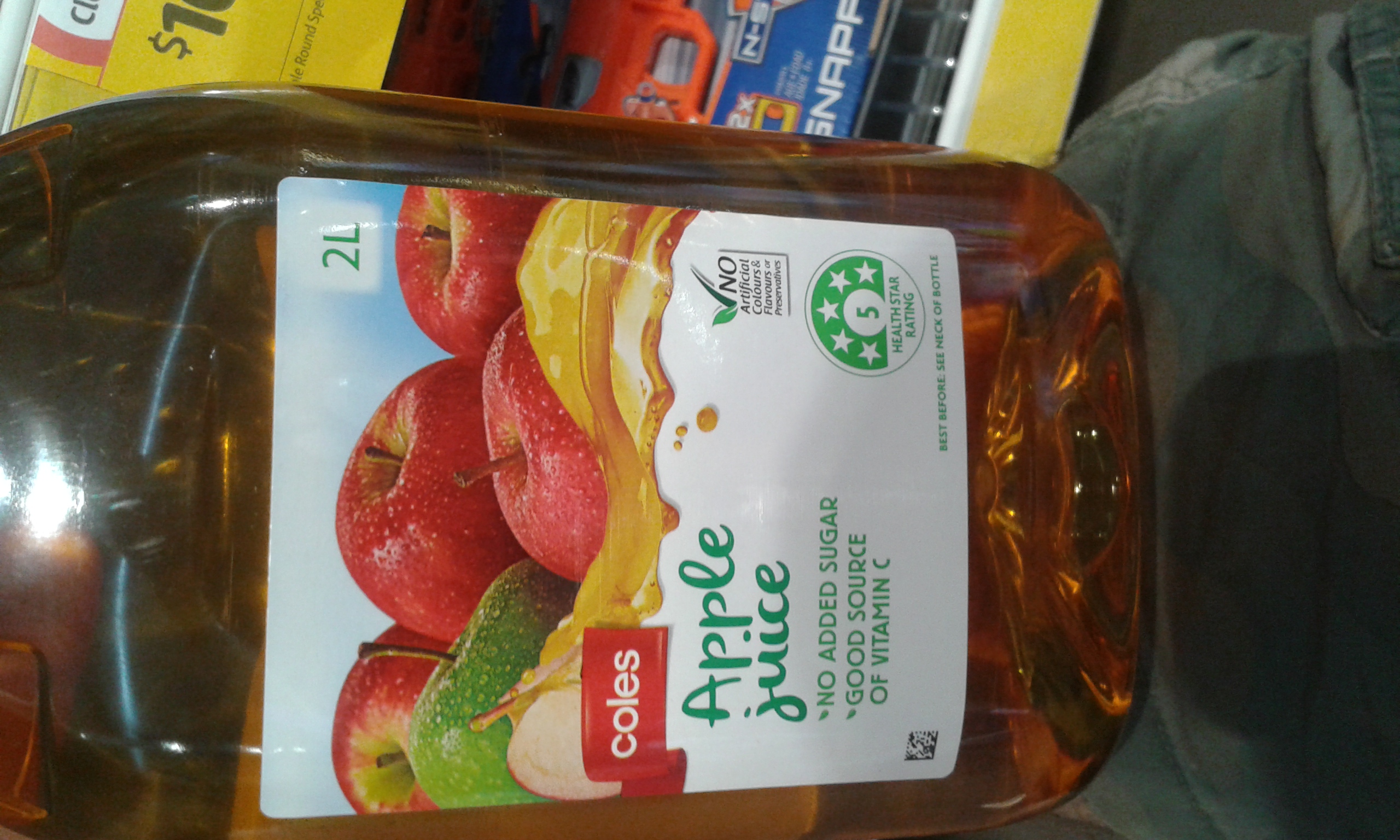
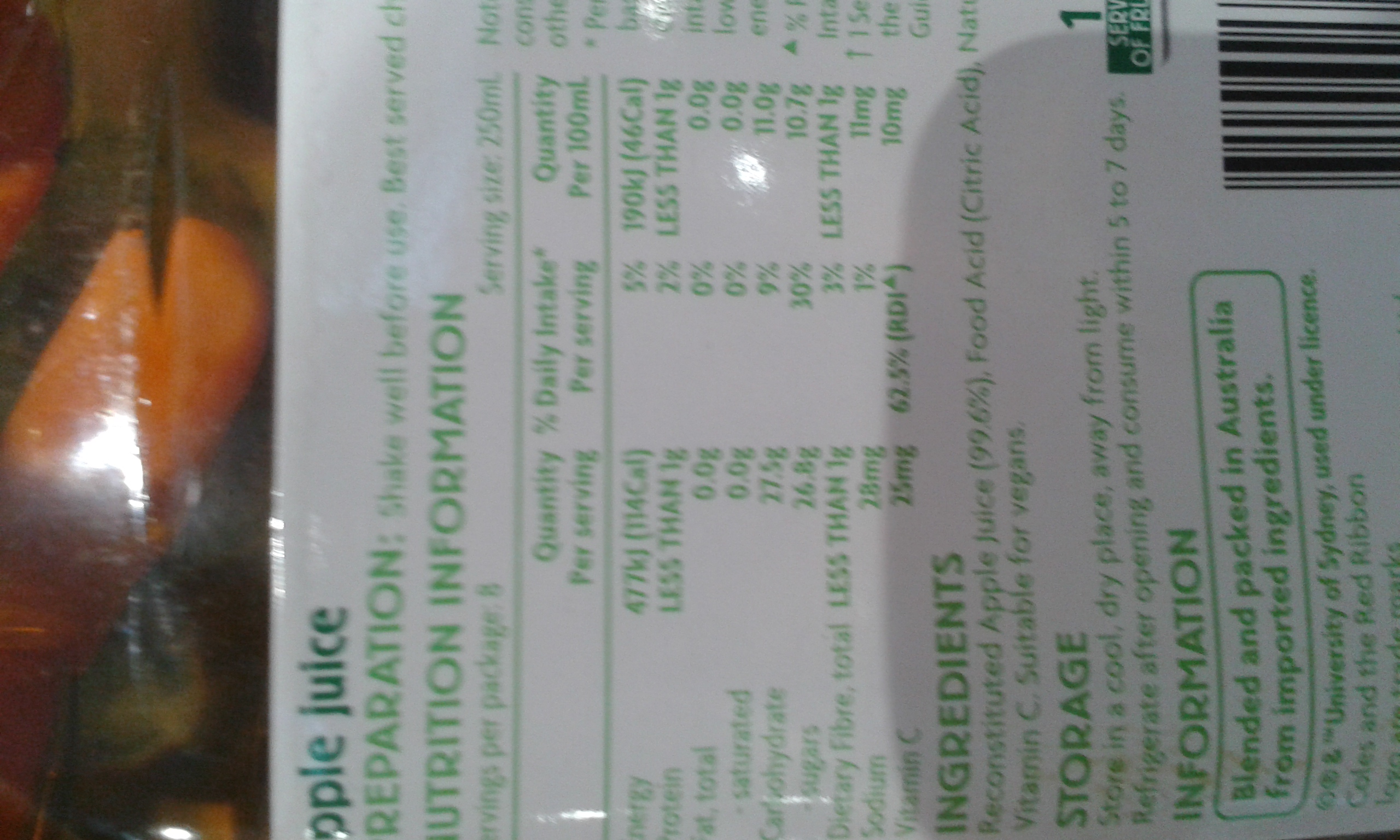
Similarly, how does a highly processed box of cereal, like the one shown below, receive a healthy 4-star rating and the Heart Foundation Tick despite containing 23.5% sugar?
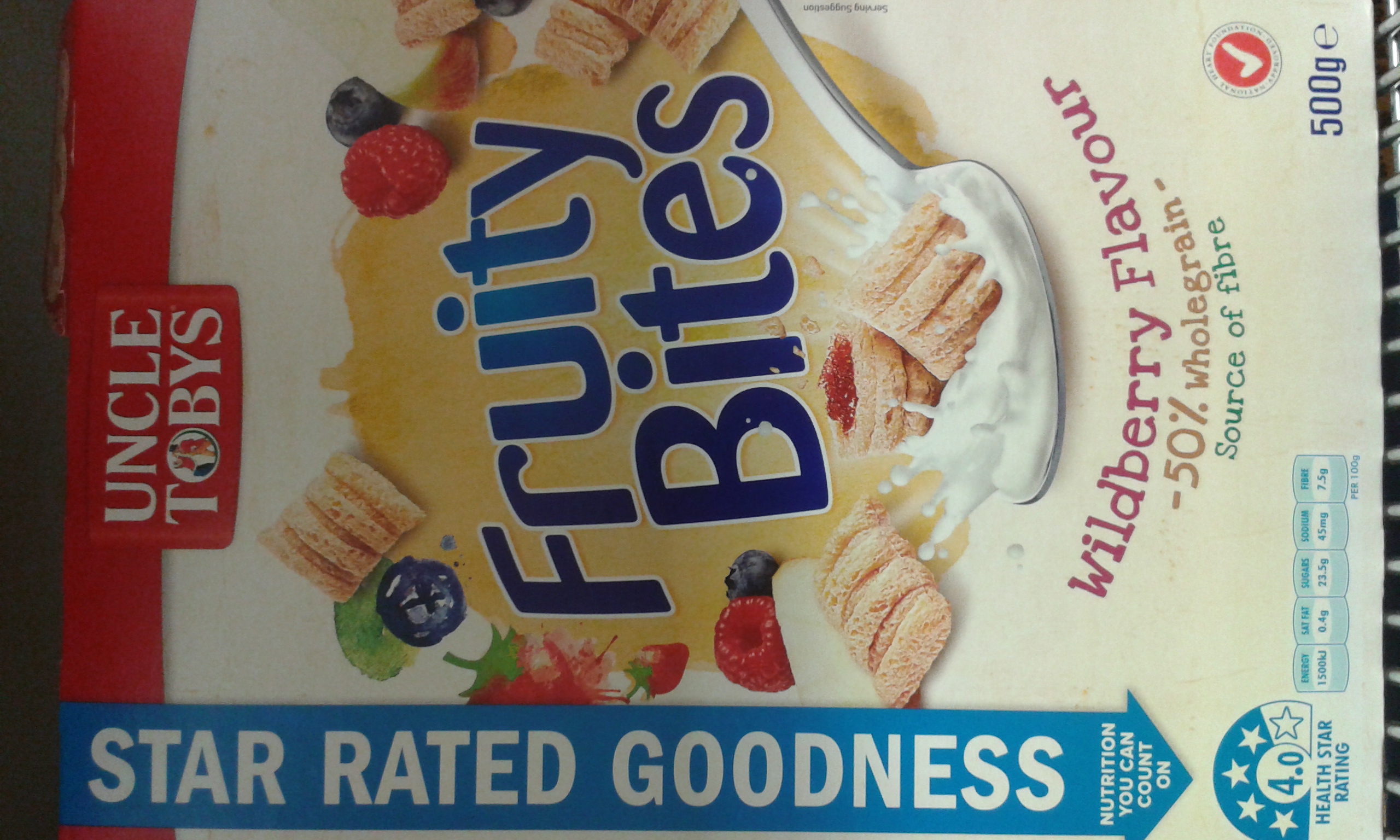
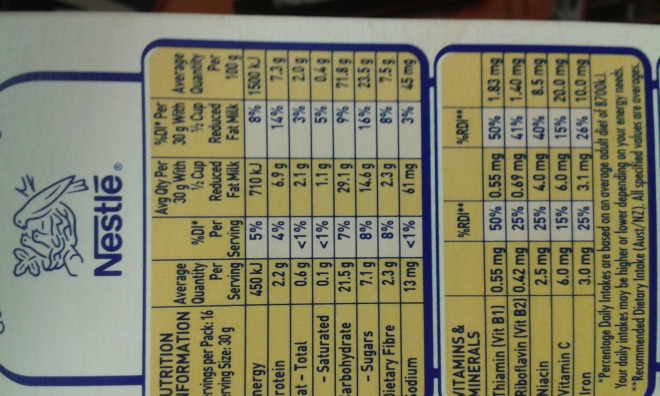
How does a processed sugary chocolate-flavoured “Up and Go” milkshake, which contains 19.3 grams of sugar per serve, receive a healthy 4.5 star health rating?

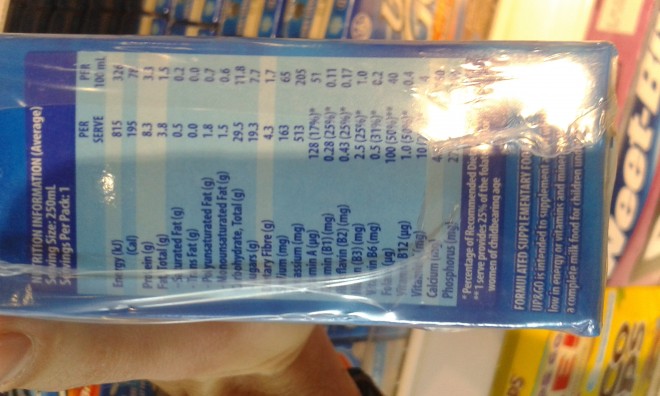
And how does Milo receive a healthy 4.5 star health rating when it is made up of nearly half sugar?

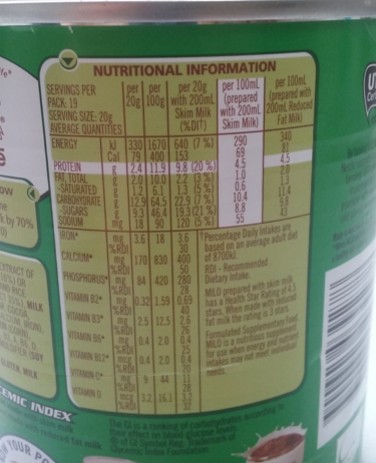
Is there any wonder why sugar consumption is sky-high, and diabesity is a growing epidemic in Australia, when our nutritional science establishment largely ignores sugar’s infestation within our food?

